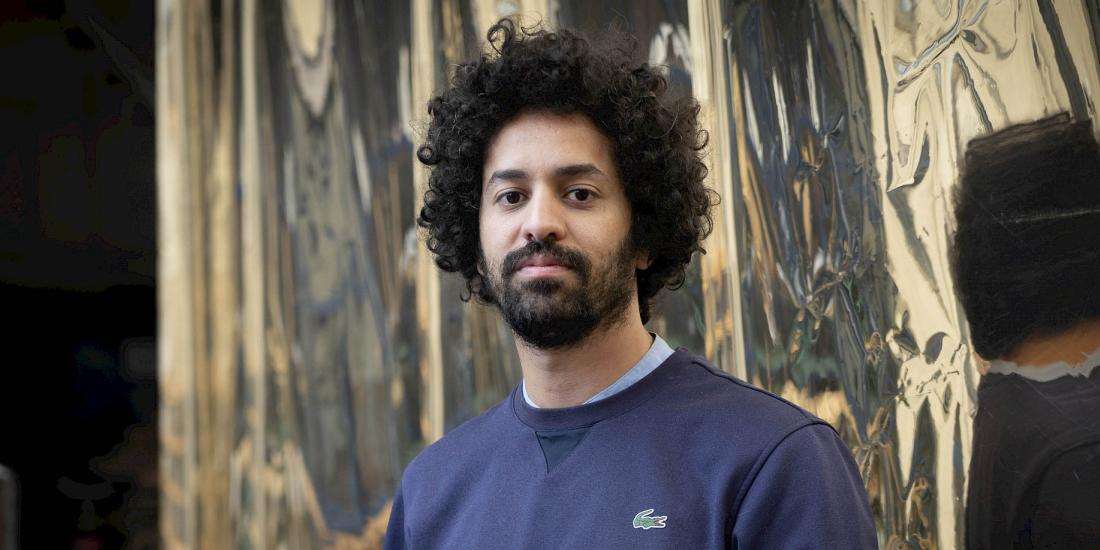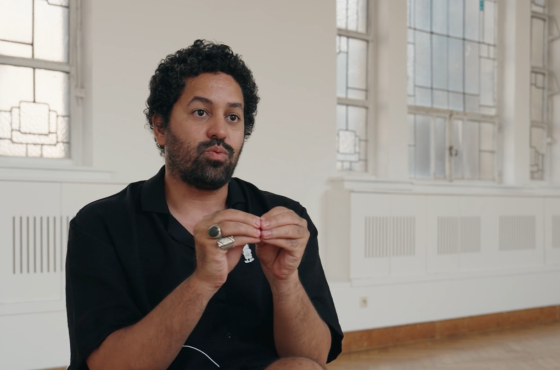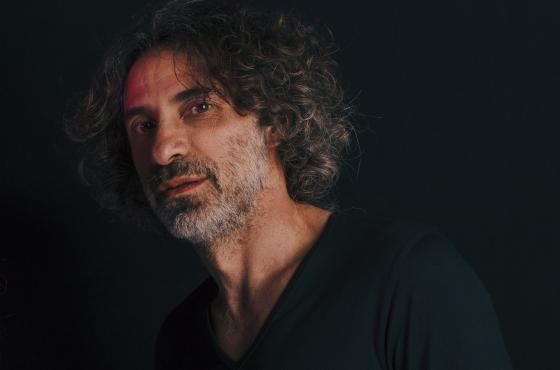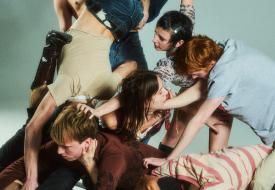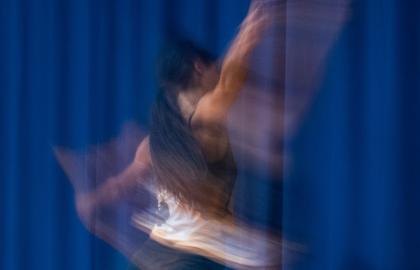How would you describe your work?
Radouan Mriziga: “I explore the relationship between body, space and the inner self, through a choreographic lens. It can take many forms, like dance, text, installation or video, but movement is always the starting point."
Elias D’hollander: “I study the way choreography and architecture interact with each other. I first encountered Radouan’s work during my academic research and immediately felt captivated by its capacity to resonate with multiple things at once, moving from the body outward."
What can we expect on 18th September?
Mriziga: “Music has always been part of my work, because sound and rhythm are a tool and a driving force that inherently suggest movement. And I like choreographing with and around live musicians; the challenge is to see how far we can go! That’s why we chose a piece like John Adams’ Shaker Loops: the string ensemble it requires offers flexibility and lets the imagination flow. I personally chose not to perform myself, to better observe the concert hall, the musicians and the performer, Maïté Maeum Jeannolin, who is fantastic."
Does the Henry Le Bœuf Hall become a character in this performance?
Mriziga: “Oh, absolutely. It’s my first time doing this at Bozar, which is exciting, especially in a place with such history. It feels like a spaceship taking us somewhere – to a beautiful place, hopefully! It’s technically, visually and acoustically very refined. Just walking into it evokes emotions and images. We’ve had many discussions with the team about how to use its architecture as part of the experience."
D'hollander: “Horta’s Centre for Fine Arts was built on difficult plots where the ground had to be drained before laying the foundations. So the building itself prompts questions on the surrounding ecology and the way Brussels was built over water. The architecture also traces an evolution: from Horta’s earlier colonial-influenced work (the “Style Congo”) to a more modernist and formalist architectural language. That dialogue between the past and the present becomes part of the narrative."
"We want to weave different dimensions: the histories of the music, of the musician and of the building, and their relationship to nature — and everything converges through the sound."
You explore recurring themes such as identity, culture, memory and ecological concerns. What themes do you want to address this time, and how will the audience experience them?
Mriziga: “We want to weave different dimensions: the histories of the music, of the musician and of the building, and their relationship to nature — and everything converges through the sound. The audience becomes part of this multilayered space that expands from the personal point of view of the performer to broader themes like ecology."
In 2024, you worked on a choreographic interpretation of Vivaldi’s Four Seasons. How does classical music appeal to you?
Mriziga: “As a Moroccan, classical music isn’t something you traditionally dance to. So the question becomes: can I create dance for this music? Classical music has a rich tradition of documenting its compositional methods. It offers a window into the composer’s perspective within their historical context, like a bubble from the past. But so many scientific insights may drain an artwork of its mystery. That’s where I step in: how can I restore that sense of mystery, and add new layers, narratives and interpretations through my choreographic lens?"
What governs your creative process?
Mriziga: “Creating a scenography is very much about shaping a journey for the audience. Usually, music comes later in the process, but for this project, it’s the starting point. It’s a new, enriching approach for me, since normally I start with imagining feelings, memories and hopes, which become words, questions, images, movement. And it goes from the performer’s body to the audience’s through space and sound. My choices are led by intuition or emotional intent, otherwise, the performance would last 24 hours!" (laughs)
D'Hollander: “What drew me to Radouan’s work is the balance between openness and complexity — it invites the audience in, leaving space for personal interpretation. There’s a beautiful idea from Édouard Glissant that runs through Radouan’s work – the idea of “opacity”: even if you don’t understand everything, there’s always room for relation."
What do you hope the audience takes away?
Mriziga: “A feeling of “togetherness”. I hope they connect actively — not just as distant observers – with the music, the performer, the space, their own memories and imagination. My goal is to leave a lasting impression on the audience’s psychological and physical memory, using art and the body as a medium. If I can achieve that, that’s more than enough for me!"
